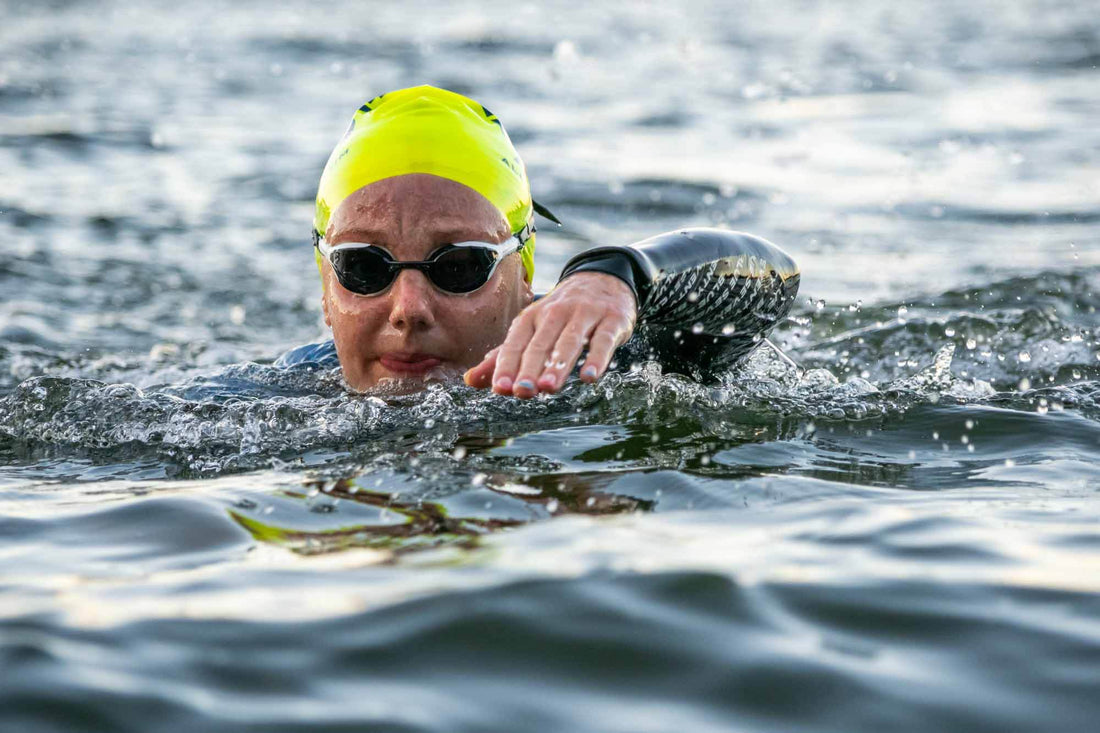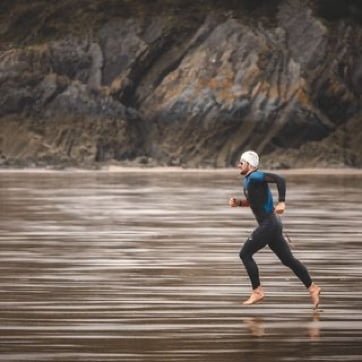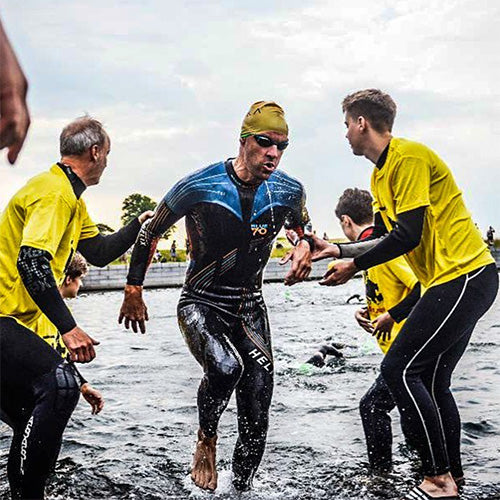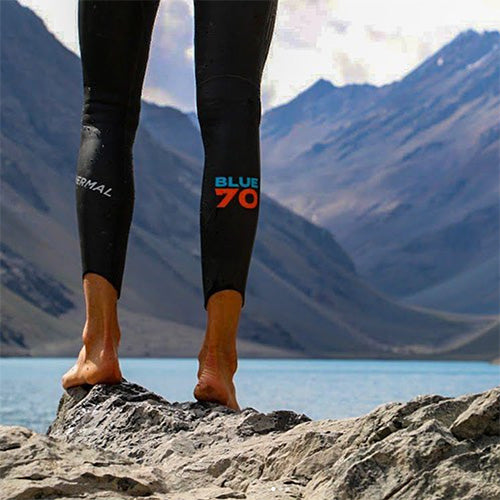Managing Anxiety while Open Water Swimming

Anxiety during an open water swim can be a persistent problem, especially for those just starting out. Whether it's the conditions - choppy water, cold temperatures, poor visibility or breaking waves, pre-race nerves, or simply the idea of swimming through a deep open body of water, just about every one at sometime has felt their heart rate increase and breathing become more shallow during an open water swim.
What sets a successful open water swimmer apart is the ability to manage and prevent anxiety from turning into panic. Blueseventy athlete, professional triathlete and coach Angela Naeth offers several great tips on how to mitigate open water anxiety and gain more enjoyment from your swims.
1. Focus on Your Breathing Rhythm
When anxiety strikes, your breathing often becomes shallow and erratic, making the panic worse. The key is to control your breath as soon as you feel anxious.
-
Regulate Breathing: Start by slowing down your stroke and focusing on deep, rhythmic breaths. Inhale fully and exhale slowly and completely. Try counting your breaths in sync with your strokes to create a consistent rhythm. For example, inhale every three strokes and exhale fully while your face is in the water.
-
Exhale Underwater: Focus on exhaling through your nose or mouth while your face is underwater. Fully emptying your lungs helps prevent that suffocating feeling and reduces tension. Practicing steady exhalation underwater keeps you calm and prevents shallow, panicked breathing.
2. Use a Mantra or Counting Technique
Anxiety often escalates when your mind spirals into negative thoughts. To combat this, use a mantra or counting technique to stay present and focused.
-
Choose a Calming Mantra: Pick a short phrase that helps calm you, such as "I'm calm and strong" or "Breathe and relax." Repeat this mantra in your head as you swim to refocus your mind away from anxious thoughts.
-
Count Your Strokes: Counting your strokes (1, 2, 3...) helps distract your mind from panic and keeps you focused on a task. This mental anchor can ground you in the present moment and prevent your thoughts from spiraling.
3. Slow Down and Float
When you feel overwhelmed by anxiety, give yourself permission to pause. Slowing down or even floating can help you reset.
-
Back Float or Tread Water: Stop swimming for a moment and float on your back or tread water. This allows you to regain control of your breath without the pressure of continuing to swim. While floating, focus on taking slow, deep breaths and relaxing your muscles.
-
Swim at a Slower Pace: Instead of trying to push through the panic, slow your pace. Drop into a more comfortable stroke, such as breaststroke or sidestroke, which allows you to breathe more frequently. Slowing down reduces your heart rate and helps you feel more in control.
4. Engage Your Senses
Ground yourself by engaging your senses, which can interrupt the panic cycle.
-
Feel the Water: Focus on how the water feels against your skin or how your hands pull through the water with each stroke. This sensory focus can help draw your attention away from anxious thoughts and back into your body's movement.
-
Listen to Your Surroundings: If conditions permit, try to notice the sounds around you—the splash of water, your own breathing, or distant noises. This can help break the focus on anxiety and bring you back into the present.
5. Visualize Success
During training, practice visualization techniques that you can use in the water. Picture yourself swimming smoothly and calmly, handling any difficulties that arise with ease.
-
Positive Visualization: If you feel anxiety rising, pause for a moment and visualize yourself completing the swim calmly and confidently. Imagine the relief of finishing the swim or the feeling of smoothly moving through the water without panic. Visualizing positive outcomes can help shift your mindset from fear to control.
6. Acknowledge the Anxiety and Keep Moving
Sometimes the anxiety won't go away immediately, and that's okay. Acknowledge it, accept that it's there, and continue swimming.
-
Accept the Feeling: Instead of fighting the anxiety, allow yourself to feel it without judgment. Remind yourself that it's a natural response and that you can still swim while feeling anxious.
-
Focus on Forward Movement: Rather than trying to eliminate the anxiety immediately, focus on maintaining steady, forward movement. The act of swimming itself can eventually help calm your body and mind, so keep your focus on your progress through the water, one stroke at a time.
Open water swimming can feel amazing and offer the ability to enjoy being out in nature or a more serene swimming atmosphere away from swimming lap after lap in a crowded pool. By utilizing these tips during your swim you can work to find your source of calm. Remember, all progress takes time and practice. Stay consistent with your swimming, allowing yourself time to become comfortable in the water before attempting longer or more challenging swims. Celebrate your small victories and be patient if you find yourself dealing with anxiety in the open water.
For more tips on breathing and avoiding a tight "lump in your throat" feeling during an open water swim, visit Angela's full article on her coaching blog.








